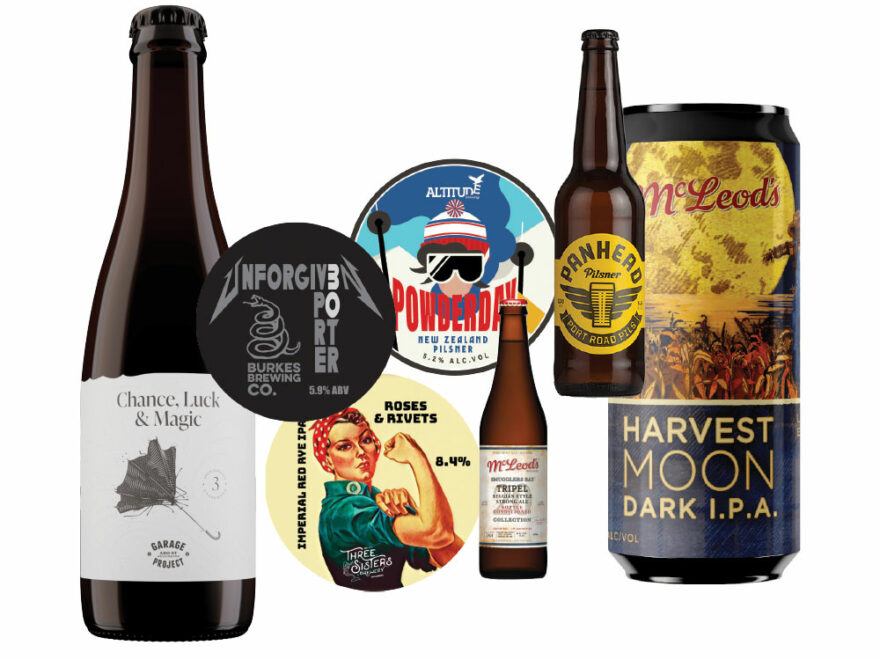After a pandemic-forced hiatus in 2020, the New Zealand Beer Awards returned at the end of 2021 and I’m calling them the Karma Awards because it seems like all the good guys got what they deserved.
The “champion brewery” trophies are a really good guide to breweries who do things consistently well as these are awards are based on total medals — gold, silver, bronze — won across a range of styles.
The breweries are put into categories according to their sizes: micro, small, medium and large. There’s also an award for champion exhibitor which is based on a complicated system that awards points for medals and then divides that by total entries. It helps even out things between the big and small entrants.
The Champion Microbrewery went to Three Sisters in Taranaki. This is for breweries that make up to 50,000 litres a year. That’s a tiny amount of beer and for Three Sisters, most of it is sold in their New Plymouth brewpub which has only been opened for a year so it’s a great achievement for this small team. They won a gold medal and trophy (for best in class) for their Roses & Rivets Imperial Red Rye IPA
Breweries making 50,000-200,000 litres per year are called “small”. Altitude Brewing from Queenstown bagged this one. They are another brew-pub with a great atmosphere at Frankton, on the shores of Lake Wakatipu. They won a dozen medals: including a gold for their Powder Day Pilsner.
The champion medium sized brewery title is the most competitive as this is the ballpark for most of the craft brands you see on the supermarket shelves. This is for breweries that make up to 2 million litres but truth be told, most of them would make a million litres or less every year. Previous winners of this title include Parrotdog and Liberty, both high calibre breweries with consistent output. But if you asked real beer geeks to name their favourite brewery, a high number would cite McLeod’s from Waipu. They make a wide-range of classic styles but don’t have the supermarket presence that many of their rivals do. They won a trophy with Harvest Moon, a Cascadian Dark Ale (a hoppy dark beer which is soon to be released again for autumn) and added a gold with their Smugglers Bay Belgian Strong Ale. And they didn’t even enter their most popular beer: the 802 Series, an ever-changing series of hazy IPAs released each month.
The champion large brewery has previously been the domain of Lion but there are more and more craft breweries now in this category and the winners were the undisputed craft gods: Garage Project. They won a staggering five gold medals (only 35 were awarded in total out of more than 800 entries). Their gold medal beers included Chance Luck & Magic, a blend of three vintages of spontaneously fermented ale, Proper IPA, made with potatoes in conjunction with Proper Crisps, Ghost Light Hazy Pale Ale, Raspberry Cabaret (a fruited sour) and Pickle Beer (yes a beer that tastes like dill pickles!).
The champion exhibitor award went to a real underdog, with Alibi Brewing from Waiheke Island taking the title. Alibi are based in the Tantalus Vineyard on Waiheke. They entered just four beers but won a trophy with their Timna Zima a dark lager. Their Bohemian Pilsner picked up silver and their Pink Guava Sour got a bronze. That consistency across their entries was enough to take the prize.
Finally, there is the champion beer.
All the trophy winners from different classes are narrowed it down to three finalists: Chance Luck & Magic by Garage Project, Panhead’s multi-awarded winning Port Road Pilsner and Unforgiven Porter by Burke’s Brewing.
And in an upset for the ages against those two Wellington giants, the little brew-pub in Tekapo came through with Unforgiven Porter. It’s the second major award for owner-brewer Sebastian Burke this year after his #FakeNews Hazy IPA got a Top-30 spot at the New World Beer & Cider Awards.
If you want to find out more about the medal winning beers, the Brewers Guild of New Zealand has plonked them all on an interactive map which you can find at https://www.nzaletrail.com/
Article written by Michael Donaldson

